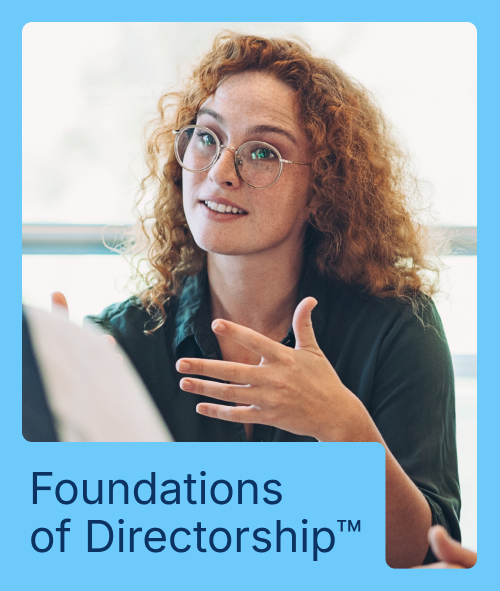Good Shepherd ANZ CEO Stella Avramopoulos shares insights on cross-sector innovation in her work to create lasting change for women and girls.
How do you bring the Good Shepherd mission to life?
Our mission describes a journey of healing, recovery and thriving, ensuring women, girls and families are safe, well, strong and connected. Those four words came from a woman with lived experience when we first developed our strategic plan seven or eight years ago.
I’ve known this organisation a long time, but never expected its level of courage, vulnerability, and genuine audacity. Perhaps, as a women’s organisation, we inherently do things differently. For instance, our unique operating model involves winning large contracts then subcontracting or partnering with local organisations that are experts in their communities. We prefer to work with and through others.
Is collaboration and information-sharing central to your organisational DNA?
Absolutely. We’re 200 years old, beginning as a women’s refuge in Angers, France. We’re now in 68 countries globally, including 161 years in Australia. We know our history, the good and the bad — understanding our past provides the solid foundation we need in the complex, high-risk world of service delivery.
I didn’t appreciate how embedded values like zeal and audacity were, or the volume of each person, until I came here. Staff might not know every detail of our strategic plan, but they all know our values, their own reasons and how they shape our culture and behaviours.
We’re increasingly operating in polycrisis environments, where agility is essential amid constant complexity. Standard processes rarely hold up well in these chaotic situations. No person or organisation is a legend. We’re all learners and need to take a systems lens to how we work with others. This is why we’ve set up Ecosystem Enablement, a service department where we imagine, learn, test and spread new approaches to activate cross-sector, multi-stakeholder coalitions to leverage impact better. Everything and whomever we partner with in the ecosystem, our guide is that they must align with our mission, values and co-responsibility. Our stewardship must remain collective — this is a trademark.
How do you balance individual needs with systemic barriers?
It’s an ecological model, placing us within a dynamic, complex environment right from infancy. When working with a woman, you quickly realise you can’t just focus on her individually — you must consider her family, community and the broader systems affecting her life. The real challenge is aligning efforts. There are tens of thousands of NFPs with ambitious missions, but how do we coordinate our support to make a lasting impact?
At an individual level, there’s insufficient funding to address long-term issues like income, financial wellbeing and psychosocial needs. No single organisation can manage this alone. A key lesson from my time as a corrections officer was that sustained change, particularly around intergenerational disadvantage, needs strong interventions combined with multidisciplinary support, implemented and sustained for a sufficient time period.
Funding often resembles an unstitched patchwork quilt, with organisations operating and being funded in separate swim lanes. Multiple sectors share the same client without realising it, missing opportunities to intervene earlier or prevent crises becoming intergenerational. It’s about aligning efforts beyond individual sectors.
At Good Shepherd, we collaborate for shared impact, leveraging the strengths multiple sectors and organisations have, rather than always delivering services directly ourselves.
What collaboration are you most proud of?
Our family violence services — it’s part of why we partner with CommBank. We noticed many groups focus on crisis response, but fewer address recovery. A major issue is refuge shortages, forcing women and children into hotel rooms, which is especially tough on children. We wanted to disrupt that cycle.
Through our partnership with the Mercy Sisters and Housing all Australians, an unused convent with 10 bedrooms and a lift became available rent-free. Housing All Australians arranged pro bono renovations using their building sector connections, enabling us to move women out of unsuitable hotels into a safe crisis refuge and the Victorian government was able to find the staffing for the next two years.
We now offer a genuine wraparound service there, including the CommBank-funded Financial Independence Hub program, government initiatives and our no-interest loans program. Staff and visiting professionals operate onsite, creating a one-stop shop.
Why is disruption important to you?
Over a 30-year career, I’ve seen three generations of one family fall through the cracks. We keep placing ambulances at the bottom of the hill instead of breaking the cycle. I discussed this frustration in my job interview for Good Shepherd and one of the Sisters responded, “Audacity is one of our oldest values. Give us two audacious ideas, and we’ll let you use our balance sheet.”
CEOs in the NFP sector rarely get to leverage balance sheets this way. I proposed a transformational strategy and investment in affordable housing. Since then, we’ve created an Audacity Centre for innovation and a Good Shepherd Institute.
What is your most valued career lesson?
I’m big on the idea of a leadership odyssey as a journey, not just a career ladder. An early mentor taught me to take opportunities outside my comfort zone, because nothing grows inside it.
My criminology degree led me, at 23, to a job as a corrections officer visiting Barwon Prison, a maximum-security male facility. I quickly realised formal qualifications weren’t enough. Those seven years were foundational. Inmates told me that early intervention would’ve prevented their situations.
I moved upstream into youth services, despite having no formal training there, either. I kept saying yes, even to roles I initially didn’t want, because I was committed to the mission, open to learning and pushing myself to lean into complex and challenging roles.
My biggest lesson came at Kildonan UnitingCare, soon after becoming CEO, responding to the 2009 bushfires near our Epping, Victoria, office. It meant committing resources without guaranteed funding and a significant expansion. It taught me that genuine recovery requires walking alongside people from prevention to recovery, taking a holistic approach to post-large-scale events such as bushfires and working closely with the board and government in implementing a disciplined, focused and acceptable response.
Was there a turning point when your career confidence increased?
I’m always learning from success and failure, continually stepping into complex leadership roles. I’m much more comfortable in myself as a Greek girl from Reservoir, who was a first-time CEO at 36.
In early meetings, people often assumed my colleague was the CEO, not me. I constantly questioned myself. Will I ever be credible or respected? For years, I felt excluded from established CEO circles. Eventually, I realised they’d done me a favour. They were busy with mainstream business-as-usual while I quietly disrupted, built coalitions and explored change.
What are you looking forward to with Good Shepherd’s long-term strategy?
We want to disrupt ourselves and our sector by no longer sitting on lazy balance sheets when there’s such urgent need around housing, family violence, refuges and recovery. We’re leveraging our balance sheet to invest in new initiatives like the Good Shepherd Institute, the Audacity Centre and a village for women we’re building in Marrickville, NSW. It’s a mindset shift embedded in our strategic plan, fully supported by our board and the Sisters, which requires our own co-investment.
That approach changes the dynamic significantly. We’re no longer a charity looking for handouts to do the same old things. Instead, we’re at the table with genuine skin in the game. I’m saying to our cross-sector partners, invest with us so we can achieve a greater impact together. It takes courage in leadership to lean into this.
We’re consciously shifting away from Western, individualistic approaches at system and organisational levels. Drawing from First Nations peoples, multicultural and multi-faith communities and organisations, we’re building collective, collaborative ways of working with and through others. That’s why we emphasise interculturality. Understanding diversity requires collaboration, collective action and community. This mindset involves behaviours like listening, openness, vulnerability, truth-telling and a willingness to learn rather than rushing the process.
This article first appeared under the headline 'Audacity, collaboration and courage' in the June 2025 issue of Company Director magazine.
Latest news
Already a member?
Login to view this content



